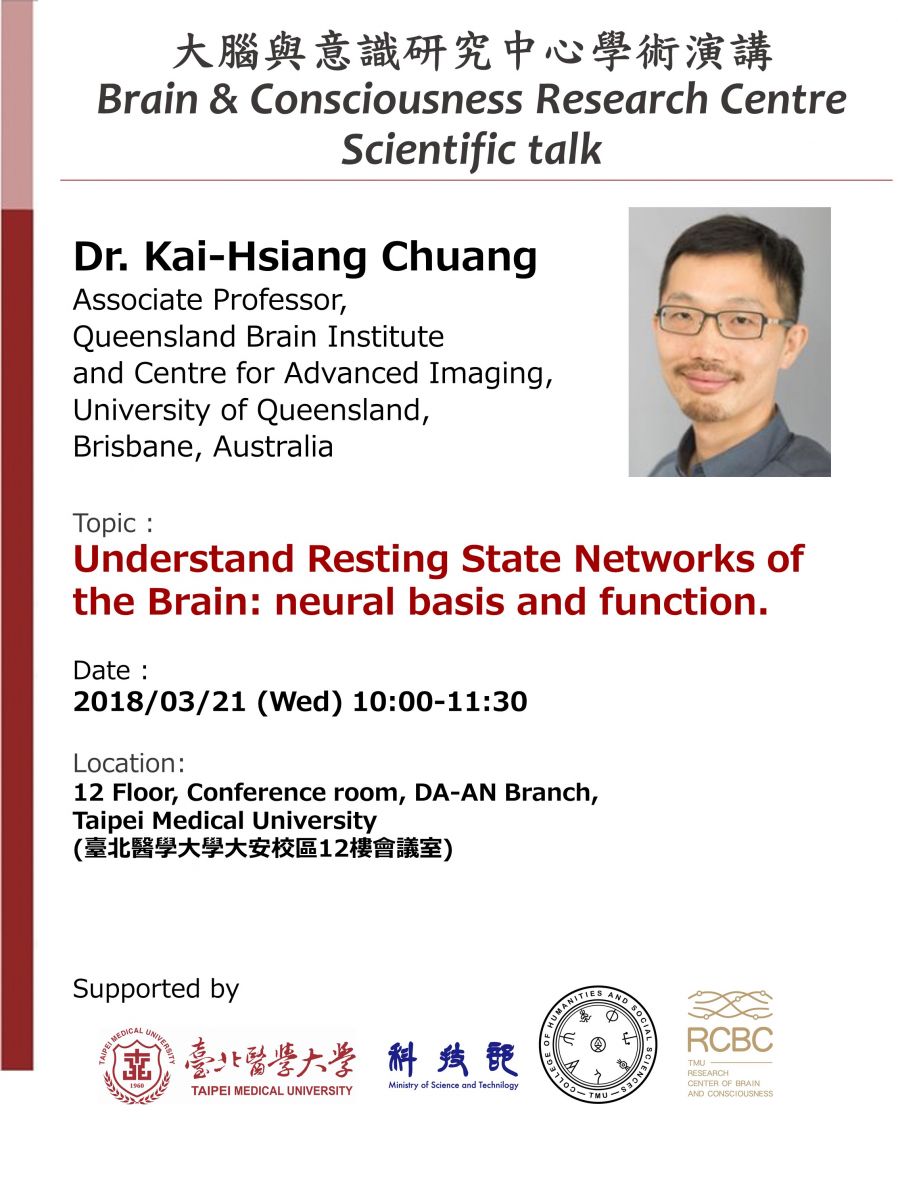Speaker : Dr. Kai-Hsiang Chuang
(Associate Professor, Queensland Brain Institute and Centre for Advanced Imaging, University of Queensland, Brisbane, Australia)
Date : 2018.03.21 (Fri) 10:00-11:30
Location : 12 Floor, Conference room, Da-an Branch, Taipei Medical University
Abstract: Synchronous neural oscillation provides information on the functional connectivity of the brain. Using resting-state functional MRI (rsfMRI), spontaneous low-frequency oscillation of the resting brain has been found to form networks that match functional organization of the brain. These resting-state networks change with development, mental processes, aging and diseases, suggesting system-level connectivity reorganization/dysfunction and the potential of using them as a biomarker. Despite its broad application, the underlying neurophysiological and neuroarchitectural bases of rsfMRI are still not clear. Using drugs that target to specific neural receptors in rodent models, we found that functional connectivity strength is receptor density, drug dosage and time dependent. Compared with electrophysiology, we confirmed that the change was not due to vascular response. Furthermore, rsfMRI was applied to measure system-level neuroplasticity after learning. These understanding will facilitate our understanding of resting-state networks, interpretation of rsfMRI signals and the translation between animal models and human.




